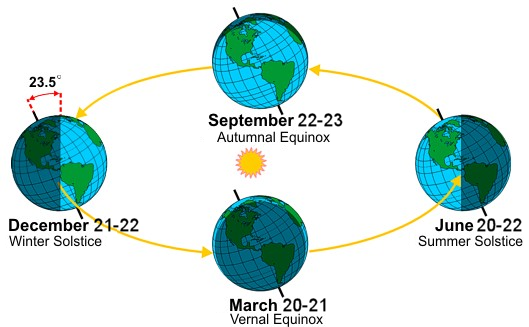
Year’s fastest sunsets and sunrises
The September equinox will arrive Saturday (September 23, 2023) at 6:50 UTC. And here’s a little-known equinox phenomenon: the sun sets faster around the time of an equinox. The fastest sunsets (and sunrises) occur at or near the equinoxes. On the other hand, the slowest sunsets (and sunrises) occur at or near the solstices. It’s true whether you live in the Northern or Southern Hemisphere.
And, by the way, when we say sunset here, we’re talking about the actual number of minutes it takes for the body of the sun to sink below the western horizon.
Why does the sun set so quickly around the equinoxes? It’s because, at every equinox, the sun rises due east and sets due west. So, that means – on the day of an equinox – the setting sun hits the horizon at its steepest possible angle.

Year’s slowest sunsets and sunrises
Meanwhile, at a solstice, the sun is setting farthest north or farthest south of due west. And, the farther the sun sets from due west along the horizon, the shallower the angle of the setting sun. So that means a longer duration for sunset at the solstices.
Also, the sunset duration varies by latitude. Farther north or south on the Earth’s globe, the duration of sunset lasts longer. Closer to the equator, the duration is shorter. But let’s just consider one latitude, 40 degrees north, the latitude of Denver or Philadelphia in the United States; parts of Spain; and Beijing, China.
At that latitude, on the day of equinox, the sun sets in about 2 3/4 minutes.
On the other hand, the solstice sun sets in roughly 3 1/4 minutes at 40 degrees latitude.

Bottom line: The fastest sunsets of the year are happening now, around the time of the September equinox.
All you need to know about the September equinox
Are day and night equal on the equinox?
The post Year’s fastest sunsets happen around equinoxes first appeared on EarthSky.
0 Commentaires